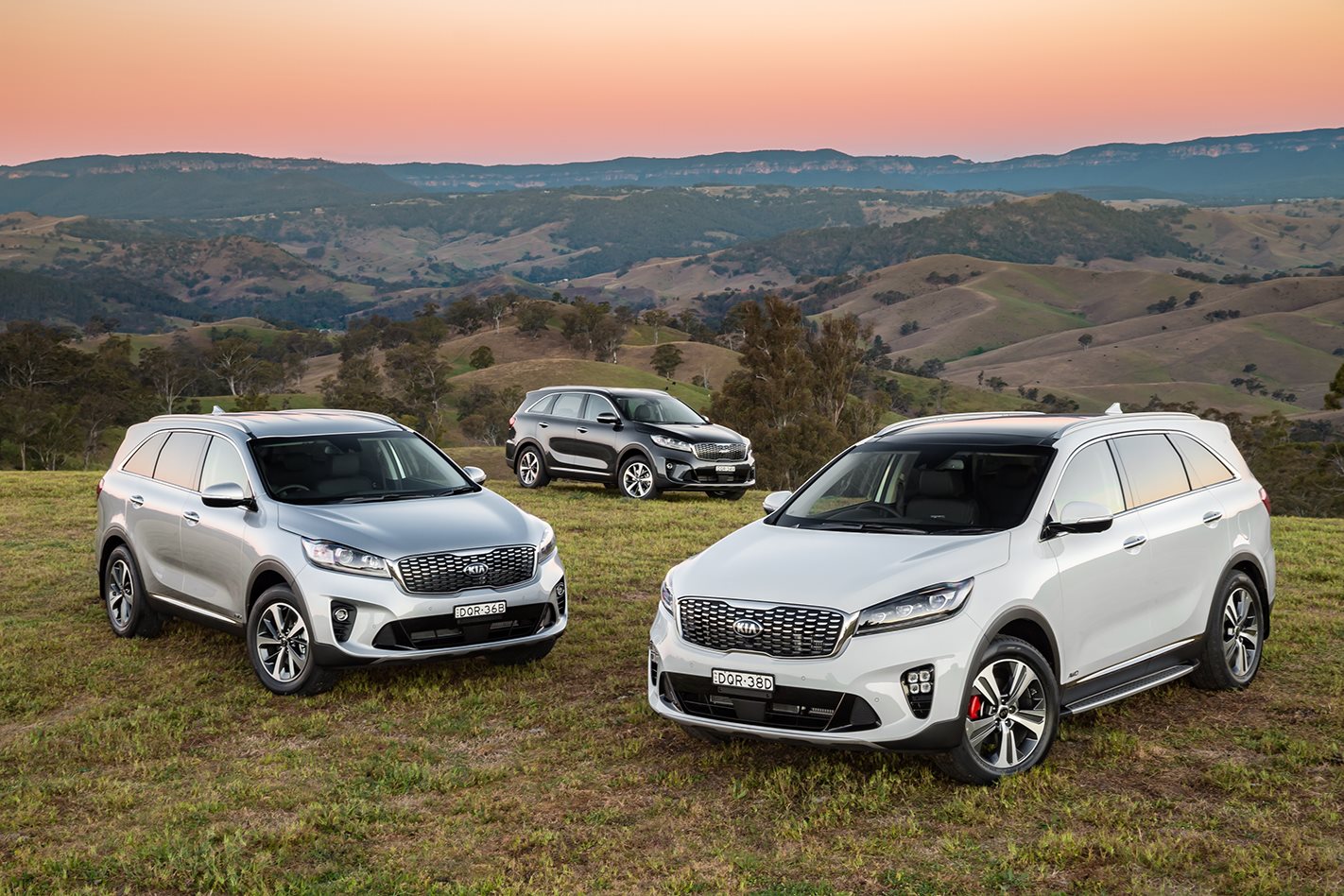Things we like
- Noticeable ride, handling and powertrain improvements
- Long list of standard features including auto braking
- Plush interior
- Seven-year warranty
Not so much
- No AWD petrol option
- Loss of ride refinement
- Road noise on GT-Line’s 19-inch wheels
KIA’S seven-seat SUV has received an upgrade which brings improved handling on Aussie roads and a list of standard features including auto braking and a new eight-speed auto transmission.
WHAT IS IT?
Kia’s award-winning seven-seat Sorento SUV didn’t do much wrong when first released in 2015, but after just two and half years years it was starting to lose touch with some of the newer kids on the block such as the Mazda CX-9. This mid-life update keeps aims to keep it ahead of the pack in terms of driveability, cabin quality and comfort and advanced safety technology.
WHY ARE WE TESTING IT?
Kia says it has addressed one of the Sorento’s few flaws; its lack of refinement away from urban black tops, by enhancing its Australian tuned suspension, steering, and enhanced performance with the addition of a new eight-speed automatic transmission that recently debuted in the Stinger. The winding roads that skirt the Blue Mountains west of Sydney provided an excellent opportunity to see if Kia’s engineers succeeded with both its V6 petrol front-wheel-drive and turbo-diesel four all-paw variants.
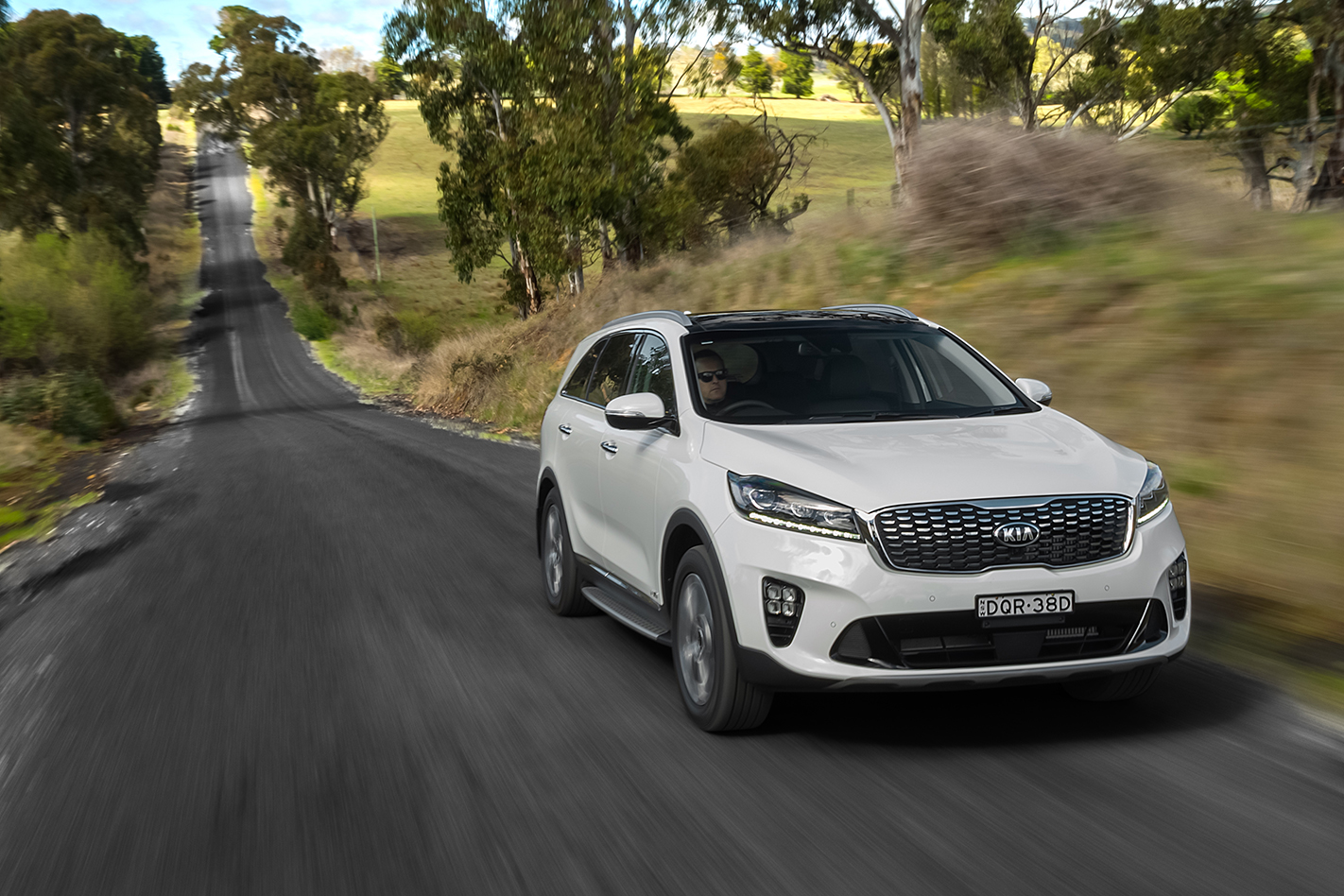
MAIN RIVALS
THE WHEELS VERDICT
The Kia Sorento has its mojo back with a fresh look and noticeable improvements to ride and handling, which were among its few flaws. While the under-bonnet tweaks that form the backbone of this mid-life upgrade might not necessarily resonate with the average buyer, the sharp-looking cabin and the inclusion of auto braking, an eight-speed transmission and fully loaded infotainment as standard will certainly make them look twice.
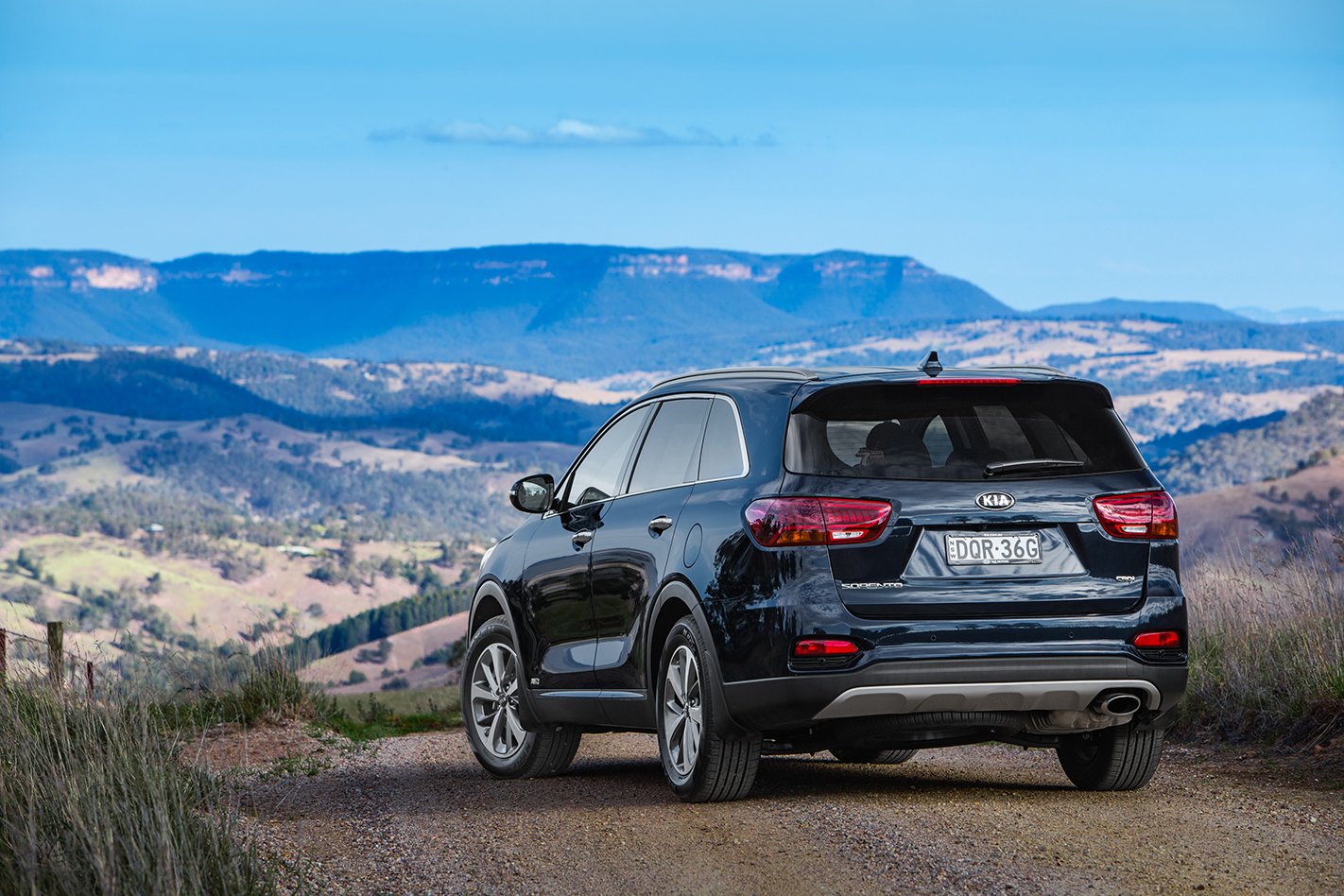
THE WHEELS REVIEW
Like a farmer’s grandchildren who grow up as prissy city kids, many SUVs have lost touch with their rural roots. The third-generation Kia Sorento was one such city-slicker, which excelled in its urban comfort zone but flinched at the prospect of negotiating hairpins or corrugations like Kim Kardashian when faced with a camp toilet.
But Sorento has been to boot camp with an upgrade that brings new capabilities on unsealed roads, as evident on the undulations and bends of Jenolan Caves Road, which hugs the western foothills of the Blue Mountains.
Kia’s Australian engineers have taken advantage of the Sorento’s new suspension setup, which features a number of detail improvements to the rear subframe and bushings, resulting in noticeable improvement in handling and stability, including minimising body roll.
Ride comfort is also noticeably improved on rougher surfaces. The Sorento absorbs bumps well with little secondary bounce, which is great news for anyone sitting in the third row. Not surprisingly it was better on the entry-level Si’s 17-inch wheels than on the 19s beneath the range-topping GT-Line, with the bigger wheels and 235/55 rubber also producing more road noise on course surfaces.
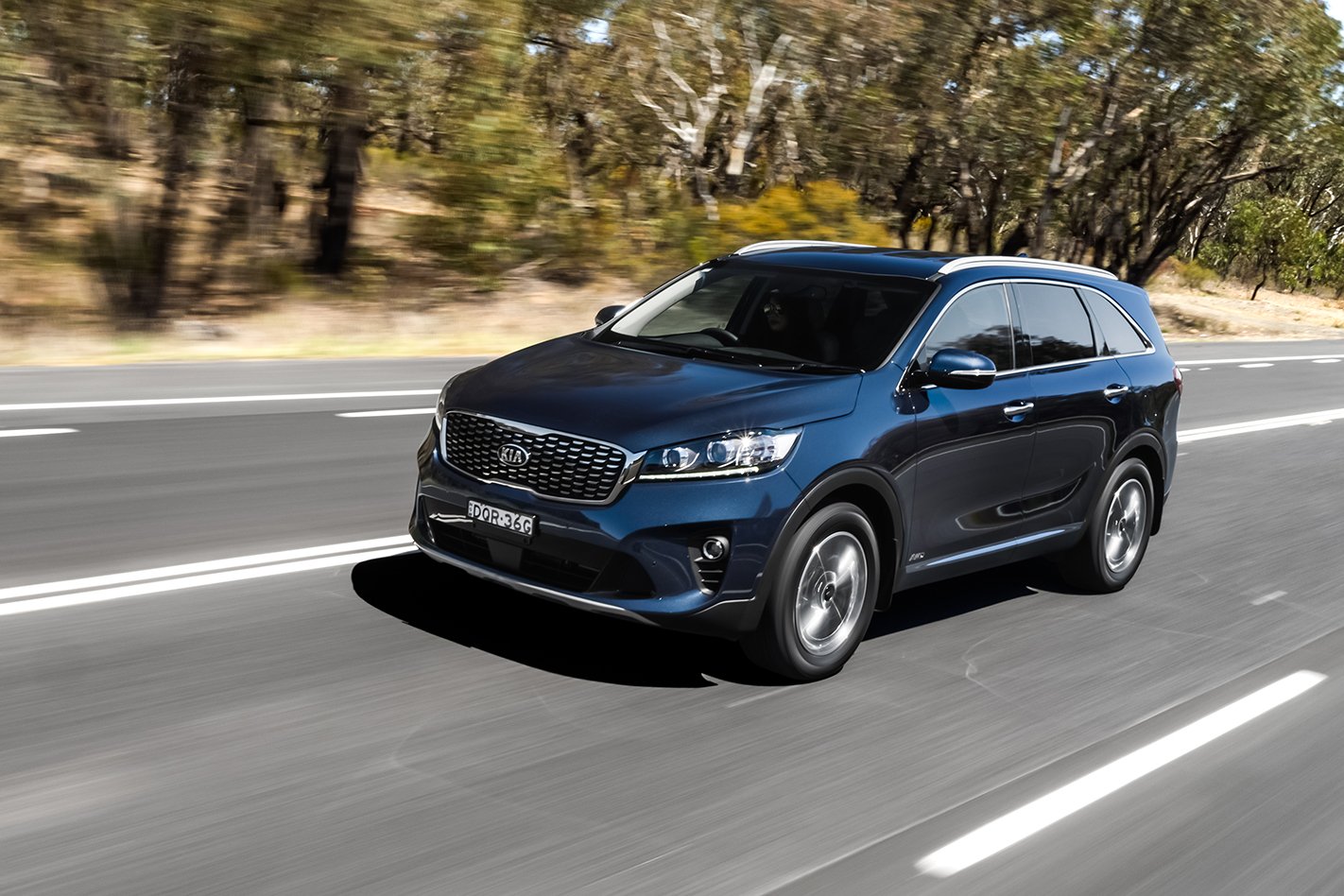
The 2018 Sorento also has a significantly enhanced powertrain with an eight-speed automatic transmission replacing the six-speed unit across the range. This is the same unit that recently debuted in the Kia Stinger and is coupled with the Sorento’s 3.5-litre V6 petrol and 2.2-litre turbo diesel four.
The extra gears mean quicker and smoother shifts, though the V6 still had a tendency to hold a gear a little too tenaciously when you put the foot down, especially at the lower end. It seems made for the diesel though, with excellent pedal response especially in low gear. This was ably demonstrated in crawling traffic through the perpetual road works on Sydney’s M5 motorway, with active cruise control engaged. In traffic jams it stops and starts automatically with the vehicle in front, but unlike many other cars with this feature, the transmission seamlessly kept up with the autonomous throttle and brake responses.

The new transmission also brings four drive modes, Eco, Comfort, Sport, and a Smart Mode which automatically adjusts powertrain and steering settings to suit different road environments – I’d want more time to judge its effectiveness. The default Comfort mode covered most bases pretty well and I’d have been happy to stay there if not for the stiffer steering offered by Sport mode in the bendy stuff.
The oil burner carries over from the previous model, while the 3.5-litre V6 petrol is a modified version of the 3.3-litre Lambda II donk in the previous version with a longer stroke, resulting in an extra 7kW and 18Nm to 206kW/336Nm. I’d be lying if I said I noticed any difference. Performance is adequate around town but as before it could still leave you wanting if you ever need power in reserve such as when overtaking.
The diesel is still the choice engine here and worth the extra $2500 with the added benefit of all-wheel drive and considerably better fuel efficiency.
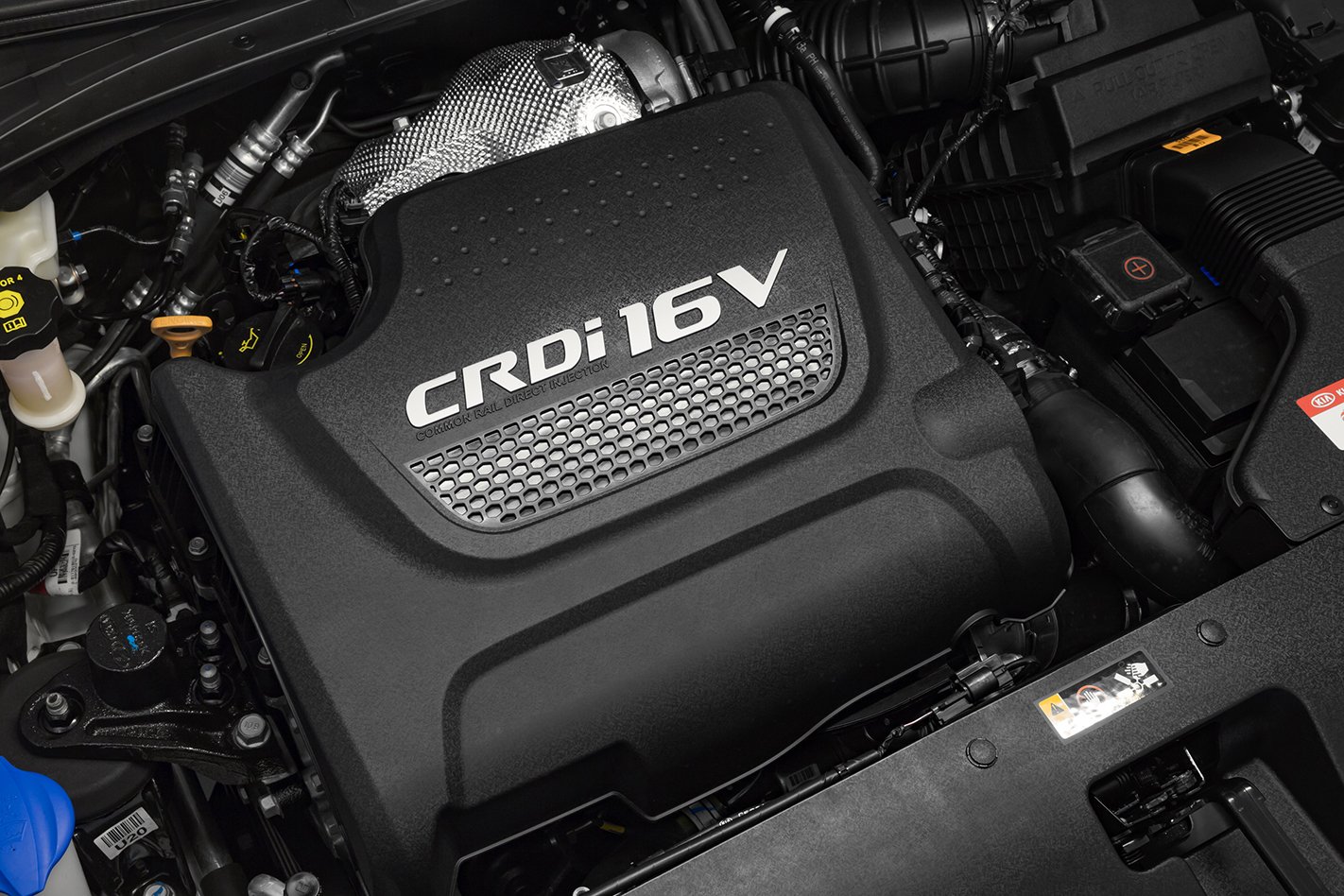
The interior has a more premium feel with liberal use of soft plastic surfaces including in the base-spec SI trim, which is only betrayed as the base model by its cloth seats.
The dashboard layout is essentially the same as the previous model but with a new 8.0-inch touchscreen that makes the fascia appear less cluttered. The main differences as go you up the range are more brightwork, more electric adjustments and significantly more cowhide. The leather-trimmed seats felt more comfortable in the mid-spec Sport than the firmer, power adjusted versions in the GT-Line.
You’re not really left wanting for standard equipment in the Si or Sport, which come with automatic emergency braking at city and highway speeds, lane keeping assist, active cruise control and driver attention alert. Also standard is Kia’s latest infotainment package with digital radio, satellite navigation and Apple Car Play/Android Auto connectivity.

2018 KIA SORENTO SPECIFICATIONS
- Model: 2018 Kia Sorento
- Engines: 3470cc, V6, dohc, petrol / 2199cc 4cyl, 16v turbo diesel
- Max power: 206kW @ 6300rpm / 147kW @ 3800rpm
- Max torque: 336Nm @ 5000rpm / 441@1750-2750rpm
- Transmission: 8-speed automatic
- Weight: 1932kg / 2042kg
- 0-100km/h: –
- Fuel economy: 10L/100km / 7.2L/100km
- Price: from $42,990
- On sale: Now
Things we like
- Noticeable ride, handling and powertrain improvements
- Long list of standard features including auto braking
- Plush interior
- Seven-year warranty
Not so much
- No AWD petrol option
- Loss of ride refinement
- Road noise on GT-Line’s 19-inch wheels
We recommend
-
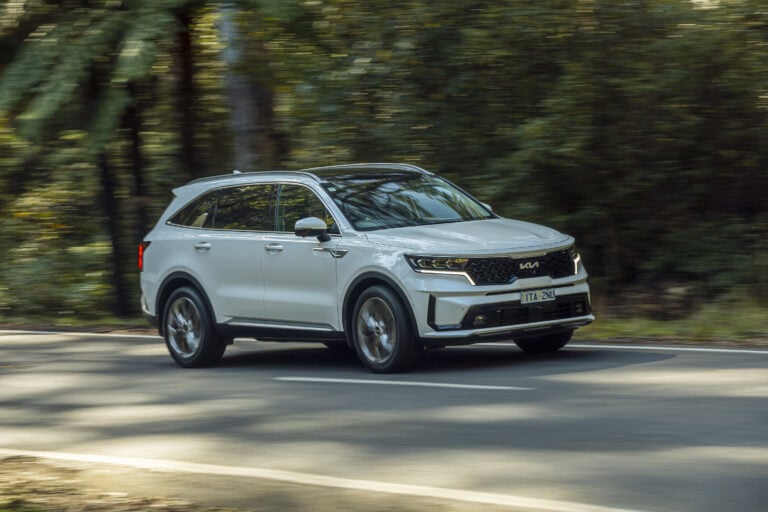 Reviews
Reviews2023 Kia Sorento review: Full range detailed
The Kia Sorento is a sought-after three-row large SUV. Learn more about the Sorento range including price, interior, boot space, safety, and performance.
-
 Reviews
Reviews2018-2020 Kia Sorento review
The Kia Sorento is a seven-seat SUV that is beautifully finished and enjoyable to drive. The optional diesel engine is refined and powerful, and auto braking is standard.
-
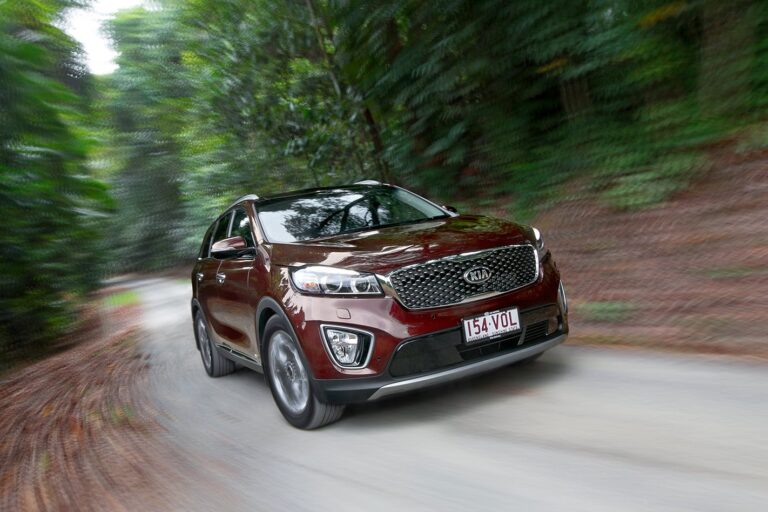 Reviews
Reviews2015 Kia Sorento review
A third-generation Kia Sorento seven-seat SUV wings in, delivering better quality, superior refinement, a reassuringly stellar crash rating and a tall stack of standard equipment to fight the likes of the Toyota Kluger and homegrown Ford Territory.


